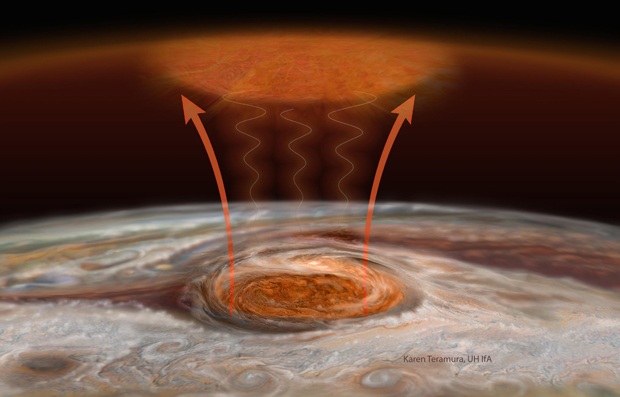

Researchers from Boston University’s Center for Space Physics, using data from the Infrared Telescope Facility on Maunakea, operated by NASA and the University of Hawaiʻi Institute for Astronomy, report today in Nature that Jupiter’s Great Red Spot may provide the mysterious source of energy required to heat the planet’s upper atmosphere to the unusually high temperatures observed.
Sunlight reaching Earth efficiently heats Earth’s atmosphere at altitudes well above the surface—even at 250 miles high, for example, where the International Space Station orbits. Jupiter is over five times more distant from the Sun, and yet its upper atmosphere has temperatures, on average, comparable to those found at Earth. The sources of the non-solar energy responsible for this extra heating have remained elusive to scientists studying processes in the outer solar system.
“With solar heating from above ruled out, we designed observations to map the heat distribution over the entire planet in search for any temperature anomalies that might yield clues as to where the energy is coming from,” explained James O’Donoghue, research scientist at Boston University, and lead author of the study.
Astronomers measure the temperature of a planet by observing the non-visible, infra-red light it emits. To map this emission from Jupiter, the team used the Infrared Telescope Facility on Maunakea. The visible cloud tops at Jupiter are about 30 miles above its rim; the infra-red emission used by the Boston University team came from about 500 miles higher. When the Boston University observers looked at their results, they found high altitude temperatures much larger than anticipated whenever their telescope looked at certain latitudes and longitudes in the planet’s southern hemisphere.
Read more about Jupiter’s Great Red Spot at the UH Institute for Astronomy website.

